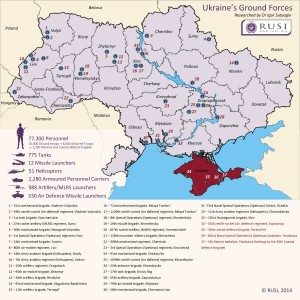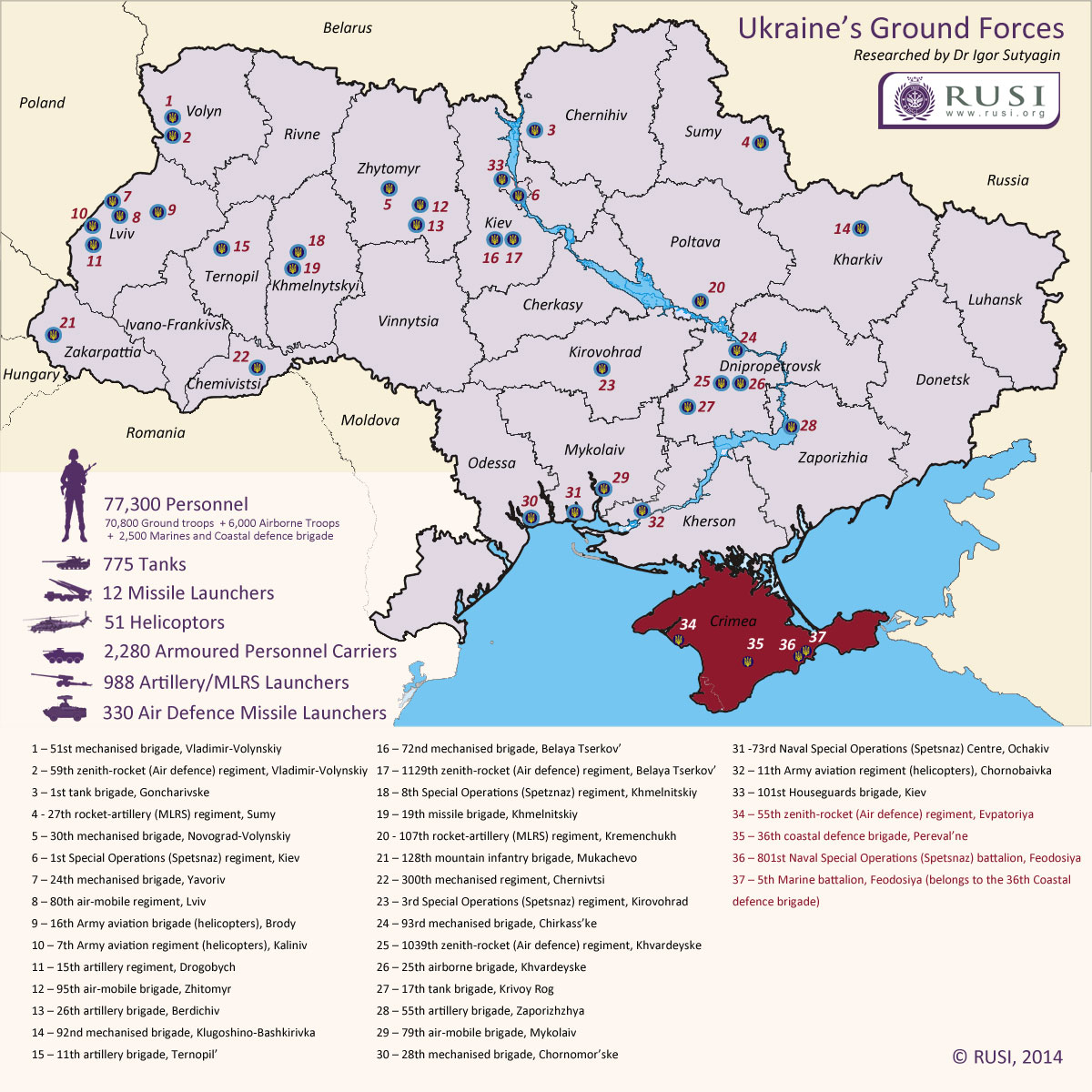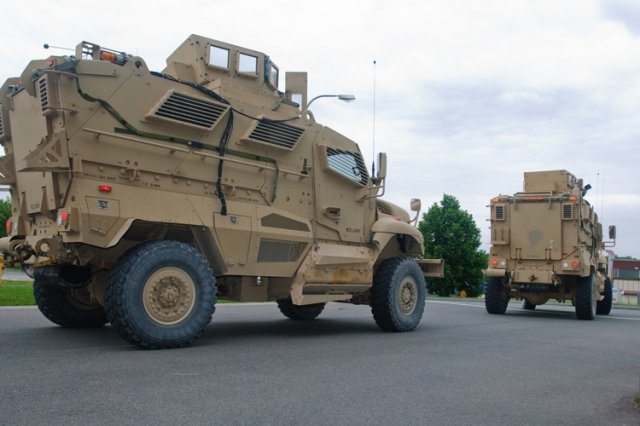Having effectively annexed Crimea, Russia now threatens the territorial integrity of the rest of Ukraine. How are Ukraine’s ground forces configured to deal with the challenge?
This map is the closest approximation of Ukrainian ground force (along with airborne and air-mobile units) deployments based on research of Ukrainian armed forces until February 2014. Readers will note that Ukrainian forces are concentrated in the west of the country, strongly indicating that the Ukrainian government never considered a military threat emanating from Russia. (See link to related graphic at bottom)
While Ukraine’s military doctrine was based upon the principle of neutrality, and while Ukraine actively participated in military cooperation with NATO and the West, the country’s practical military planning followed the pattern established during the Soviet era. Still configured to an outdated Cold War footing, Ukraine’s forces were concentrated in the western part of the country, with a higher availability of camps for military units in the western and central parts of Ukraine. The country is now faced with a situation where it is unprepared to rapidly react to the accumulation of Russian troops along its borders.

With the substantial build-up of Russian forces in the Kursk, Voronezh, Belgorod and Rostov regions and in Crimea, the Ukrainian government has belatedly re-deployed ground troops to meet the prospective Russian move to south-eastern Ukraine. The lack of properly prepared camps for re-deployed units is one of the obvious difficulties Ukrainian troops will encounter in the process of redeployment.
The Ukrainian re-deployment process discloses another difficulty: the lack of proper plans for a massive movement of troops Indeed, troops far too often have to travel by their own, without the aid of railway transportation or heavy lorries to move armoured vehicles. As a result, the combat effectiveness of such vehicles is degraded after unaided transportation. This leads to the unnecessary and undesirable waste of the vehicles’ resource (short enough even without such moves) – which potentially might influence their combat characteristics in a case of hostility.
Ukrainian troops have also suffered from a prolonged period of under-financing, which negatively influenced their level of combat training compared to the better, though not perfectly trained Russian troops. Meanwhile, Ukraine’s belated troop redeployments to the east are further hampered with reports of a rapid concentration of ‘tourists’ from Russia in eastern Ukraine. The border between the two countries is effectively open and it is not certain how much effective control the Ukrainian authorities have over the east.
Ukrainian military experts have expressed their concerns that these ‘tourists’ might be another euphemism for the ‘self-defence’ units that sprung-up in Crimea and which later turned out to be Russian servicemen dressed in plain clothes. There is a real fear that these elements will infiltrate Ukraine in order to seize critical key-points without open involvement of Russian troops from the other side of the border.
If this were to be the case, the Ukrainian regular troops’ ability to intervene decisively would be severely restricted. This is because this situation would be presented by Russia supporters as a ‘civil unrest’. It would then be difficult for the Ukranian government to make the case for a clear-cut military intervention. Such civil unrest situations would instead be dealt by the police and the newly-established National Guard of Ukraine.











